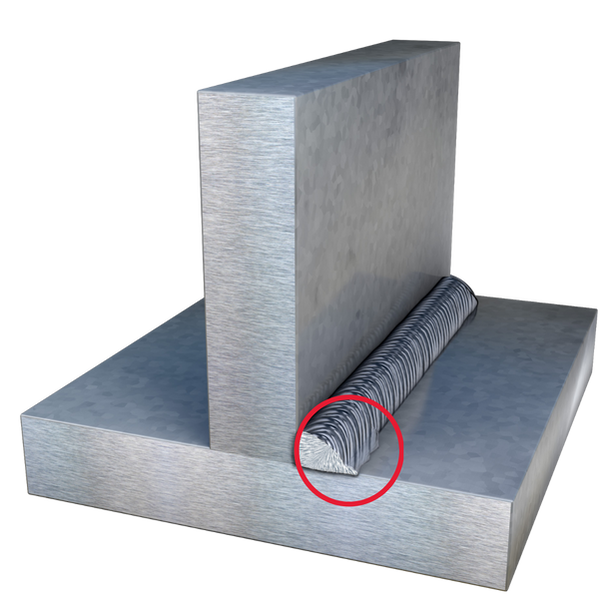Expert Strategies for Preventing Weld Undercut Successfully
Expert Strategies for Preventing Weld Undercut Successfully
Blog Article
Grasping the Art of Welding: Exactly How to Avoid Undercut Welding Issues for Flawless Fabrication Outcomes
By comprehending the root creates of undercut welding and carrying out reliable techniques to prevent it, welders can raise their craft to brand-new levels of excellence. In the search of remarkable construction outcomes, mastering the art of welding to avoid undercut issues is not just a skill yet a necessity for those striving for perfection in their work.
Recognizing Undercut Welding

To stop undercut welding, welders need to guarantee correct welding criteria, such as changing the existing, voltage, traveling rate, and keeping the correct electrode angle. In addition, using the ideal welding strategy for the specific joint configuration is important. Using weaving motions or backstepping methods can help make certain correct weld steel deposition and reduce the probability of undercut development. Normal examination of welds throughout and after the welding procedure is likewise vital to catch any kind of undercut very early and make needed changes to avoid more problems. Preventing weld undercut. By recognizing the sources of undercut welding and carrying out safety nets, welders can achieve top notch, structurally sound welds.
Root Causes Of Undercut in Welding
Comprehending the aspects that add to damage in welding is vital for welders to generate top notch, structurally sound welds. When the weld metal does not appropriately fill the groove formed between the base steel and the previously deposited weld steel, undercutting occurs. Several aspects can bring about damage in welding. One common reason is too much warm input. Welding at heats for extensive periods can lead to the base metal melting more than preferred, leading to damage. Inadequate welding wrong or existing welding speed can also add to damage. Insufficient current may not provide enough warm to thaw the base and filler steels effectively, while extreme speed can avoid proper combination, causing undercut. In addition, improper electrode angles or inaccurate torch control techniques can create locations of reduced weld steel deposition, advertising undercut. Comprehending these reasons and executing appropriate welding methods can help prevent damaging issues, making certain strong and resilient welds.
Methods to avoid Undercutting

To minimize the danger of damaging in welding, welders can use calculated welding methods aimed at improving the quality and honesty of the weld joints. Additionally, utilizing the right welding strategy for the details joint configuration, such as weave or stringer grains, can browse around here add to lowering damaging.
Employing back-step welding methods and controlling the weld bead profile can likewise assist disperse heat uniformly and decrease the threat of undercut. Regular examination of the weld joint during and after welding, as well as implementing top quality guarantee measures, can assist in finding and resolving damaging concerns without delay.
Relevance of Appropriate Welding Parameters
Selecting and preserving suitable welding criteria is necessary for attaining effective welds with marginal flaws. Welding specifications describe variables such as voltage, existing, take a trip speed, electrode angle, and protecting gas circulation price that directly influence the welding process. These specifications must be thoroughly changed based on the kind of material being welded, its thickness, and the welding strategy used.
Appropriate welding specifications guarantee the ideal quantity of heat is put on melt the base metals and filler material evenly. If the parameters are set expensive, it can result in too much heat input, creating distortion, burn-through, or spatter. On the various other hand, if the criteria are as well low, incomplete fusion, absence of penetration, or damaging may occur.
Quality Control in Welding Operations

Conclusion
Finally, understanding the art of welding requires a detailed understanding of undercut welding, its causes, and strategies to avoid it. By making certain correct welding parameters and applying quality assurance techniques, flawless construction results can be achieved. It is crucial for welders to regularly pursue quality in their welding operations to stay clear of undercut concerns and generate premium welds.
Undercut welding, a common problem in welding procedures, occurs when the weld steel doesn't properly fill the groove and leaves a groove or clinical depression along the bonded joint.To avoid undercut welding, welders ought to ensure correct welding specifications, such as changing the existing, voltage, travel speed, and preserving the proper electrode angle. Insufficient welding present he has a good point or incorrect welding rate can additionally contribute to undercut.To reduce the risk of undercutting in welding, welders can use calculated welding strategies intended at enhancing the quality and integrity of the weld joints.In verdict, mastering the art of welding needs a thorough understanding of undercut welding, its reasons, and strategies to avoid it.
Report this page